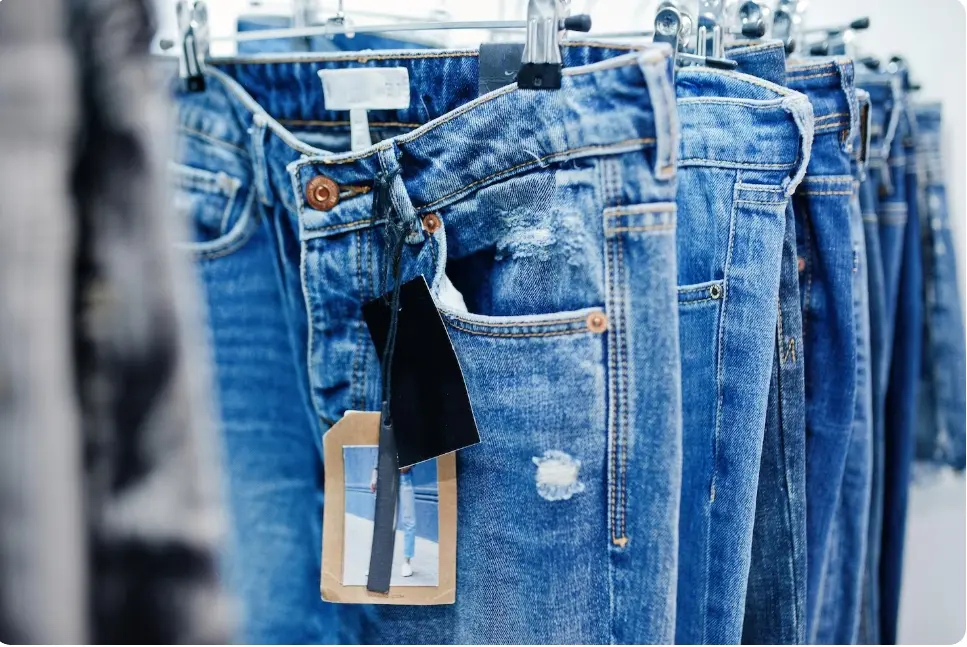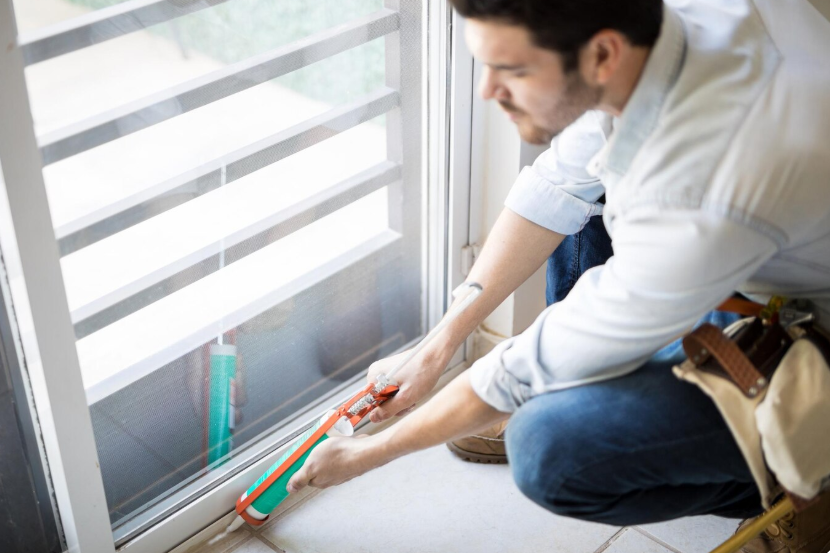Laminate floors are perhaps among the widely used flooring choices. They look clean, modern, and polished without much maintenance. But just like any other flooring, they do require some care to sustain for long and stay looking good.
If you’re wondering how can you clean laminate floors without ruining the floor or causing water damage, then here’s your step-by-step guide to it. From daily dusting to deep monthly cleaning, this guide will shed light on all that works and that which doesn’t.
Let’s start right from the beginning.
Table of Contents
What Are Laminate Floors Made Of?
Before starting with How can you clean laminate floors let’s first understand what Laminate Floors are, it helps to originally identify what we are dealing with.
Laminate flooring is synthetic, designed to look like natural wood, tile, or stone. It aims for durability, affordability, easy maintenance, and all pleasurable to live with. Of course, nothing is safe when water hits it, much less an abrasive product; hence, knowing its working is a key to its proper cleaning.
Most laminate flooring includes four layers, each acting in some decisive way:
-
Wear a Layer
The layer is an uppermost transparent protective coating that assists the floor against routine wear and tear. It offers protection against scratches, stains, and fading from sunlight. The ability of laminate flooring to withstand a certain amount of foot traffic is essentially attributed to this layer.
-
Design Layer
Below the wear layer is a decorative print, where the laminate gets its real look. This layer is a high-resolution photograph or an image printed as a laminate of wood grain, stone texture, or tile patterns. Because it is purely a print, unlike real wood, this layer cannot be refinished or sanded down.
-
Core Layer
This is the structural heart of the flooring. Made commonly from a high-density fiberboard (HDF), it lends strength, stability, and impact resistance to the floor. Since, however, it is most susceptible to moisture damage, if water gets into the seams, this core will swell or warp, ruining the floor forever.
-
Backing Layer
This bottom layer provides support against moisture and sound insulation. It also balances the entire structure to prevent bending or buckling from pressure or temperature changes.
Unlike hardwood, laminate has a composite base construction, consisting of MDF, particle wood fiberboard, or HDF with a photographic design printed on top. And since the top layers of laminate flooring are photocopied, they lose in beauty thousands of times when water or strong chemicals come into contact with them. Laminate cleaning needs to be very gentle, with very low moisture; for example, using too much water, steam mopping, or sloshing a rag can start to lift edges, rub down the design layer, or just outright warp the boards. As you can imagine, working on laminate flooring must be treated as though preserving the thin layers underneath. That requires attention, regularity, and the right tools.
How Often Should You Clean Laminate Floors?
Depending on location and level of traffic, laminate floors may require cleaning more or less often. Generally, it is advised to dry sweep or dust daily to remove dirt particles and other debris as a solution to how can you clean laminate floors, as it might eventually scratch the protective layer. Additionally, a weekly wipe-down with a damp mop will help deal with smudges from light stains and residue from everyday activities. Deep clean the floor with a laminate-safe cleaner once a month to refresh the actual floor and its finish. If your home is filled with little ones, pets, and visitors, you might need to clean parts of your house more frequently to maintain the look and feel of cleanliness.
Tools You’ll Need
Nothing fancy is required to clean laminate floors; just essential tools that work softly and effectively. For everyday dusting, a microfiber mop or soft broom will do fine without scratching the floor. For a better clean, the vacuum cleaner can do a good job of getting dirt from the grooves if set to the hard floor setting without the beater bar. A damp mop or a spray mop and a bucket for the water (if one doesn’t opt for the spray version) make a handy combination for cleaning every week. A ph-neutral laminate floor cleaner or a mild do-it-yourself version that won’t strip off the protective layer should always be chosen. Leave steam mops behind since they release far too much moisture, along with scraping and waxing with oil-based sort of products-will leave residues or eventually cause damage to the surface of the floor.
How Can You Clean Laminate Floors: Step-By-Step: Daily & Weekly Cleaning
Step 1: Dry Dust or Sweep
Use a soft broom or microfiber dust mop. Sweep in the direction of the planks to bring up the dust caught between grooves.
If vacuuming is your choice, ensure your vacuum is set to “hard floor” or one that has no rotating brush attachment. This is important because those spinning brushes can scratch the surface.
Why dry dusting matters:
- Prevents dirt from getting ground into the surface.
- Keeps the top layer clear of debris that can cause micro-scratches.
Step 2: Spot Clean Spills Immediately
If anything spills water, juice, or pet urine, clean the event promptly with a dry cloth or paper towel. Then wipe down the area using a damp microfiber cloth.
Laminate does not take well to standing water. Allowing spills to be there for long periods can cause the boards to warp or bubble.
How to Do a Deep Clean (Weekly or Monthly)
Once a week (or once a month, depending on foot traffic), give your floor a deeper clean.
Step 1: Choose a Cleaner
Go for one that has a ph-neutral classification and labels that are safe for the laminate floor. You could also DIY one by combining:
- 1 part white vinegar
- 3 parts warm water
- A few drops of mild dish soap (optional)
Avoid anything with ammonia, bleach, or wax as these will strip down the protective coat, or they will leave a dull and streaky residue.
Step 2: Mop With Dampness, Not Wetness
Put a little dampness on the mop; the mop should not be quite wet-so much so that, in lifting it, water drips, is putting too much water. Work in small sections-two passes minimum, always in the direction of the grain to avoid streaking. Spray mop users just mist it lightly and swipe over with the microfiber pad.
Step 3: Air-dry or Wipe Immediately
Laminate dries quickly; however, do not allow it to sit or pool. Let the air out through open windows or turn on fans; else, you could also use a dry cloth for wiping wet areas.
Some stain troubles
Grease or Oil Spots: Apply a small amount of rubbing alcohol to a microfiber cloth. Rub it gently till the spot is gone. Follow with a damp cloth to get rid of any residue.
Crayon, Ink, or Marker: Apply a small amount of acetone (nail polish remover) onto a clean cloth, but check first in a hidden area. Blot gently; do not scrub.
Chewing Gum or Wax: Make the spots hard with ice inside a plastic bag. When the spots are hard, gently scrape out with a plastic scraper or an old credit card. Refrain from using metal tools.
What to Avoid Completely
Certain cleaning habits are more harmful than good.
- Soaking floors – Never use a soaking mop; never fill a bucket to the brim with water.
- Steam mops – The combination of heat and moisture may aggravate the core layer.
- Vinegar alone – Too much vinegar will, over time, wear down the wear layer.
- Wax or polish – Laminate doesn’t require them and will leave a sticky residue.
- Harsh chemicals – These will erode their protective layer and dull their shine.
- Stick to gentle methods, and the floor will stay pretty good for quite a few years.
What If It Looks Dull?
A cloudy or streaky look on the laminate can come from:
- Too much cleaner
- Inappropriate cleaner (e.g., wax)
- Hard water residue culprit
To resolve it:
- Wipe with a cloth dampened in plain water.
- Buff it dry with a microfiber towel.
- You can also gently use a vinegar-water (3:1) mix to clean off any buildup.
- Use cleaner sparingly and wash the mop pad often when mopping.
Dealing with Scratches or Chips
For minor scratches, waxing using laminate floor repair kits may suffice. These basic kits usually contain:
- Wax pencils/crayons of differing shades
- A putty knife
- Filler paste matching the floor colour
The technique will involve filling the scratch or chip with paste using a putty knife, smoothing the surface, and letting it dry. Bigger damages might require a replacement of one board. Most types of laminate flooring are floating floors; thus, one plank may be changed without having to dismantle the whole floor.
Conclusion
Laminate floors require maintenance, even if just a little. Just ongoing and mild cleaning will keep it looking all fresh. The cardinal rule on how can you clean laminate floors? Keep it away from water and harsh chemicals.
In general, other than some basic care, the laminate floors will hold up well for years without any need for refinishing, waxing, or special machinery.
If you’ve been installing laminate yourself or if you’re already living in a laminate house, these habits will help you avoid costly mistakes that could destroy the floor’s beauty.



